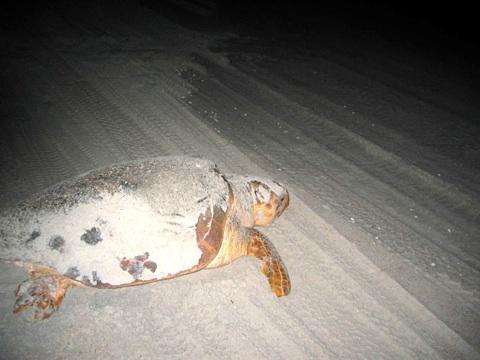If you've got some free time and enjoy walking along a sandy beach with the Atlantic surf pounding the shore, the folks at Cape Hatteras National Seashore have a job for you.
Specifically, the seashore is looking for volunteers to help them with their sea turtle "Nest Watch" program during the rest of the summer season and into the fall. Under the direction of Sea Turtle Biological Technician Michelle Bogardus, the goal of the Volunteers in the Park program is to ensure the successful hatching of sea turtle hatchlings as they emerge from their nests and make their way to the ocean. In addition, this program is designed to provide visitors with a valuable educational experience and neighboring communities with an opportunity to participate in sea turtle conservation and management.
The annual program will assist the National Park Service in monitoring sea turtle nests that have reached the point where hatching is imminent. Volunteers are needed and will be trained to assist NPS biologists with monitoring nest sites, educating the general public about sea turtle management, installing and maintaining closures, handling hatchlings, and assisting with excavations.
There are three species of sea turtles that nest within Cape Hatteras National Seashore; the loggerhead, green, and leatherback. All of these species are federally listed as either threatened or endangered. Each year from May through September, park employees conduct daily patrols to find the nests and protect them. Nests begin to hatch after 50 days of incubation, which generally begins in late July and can continue into November. When emerging from their nests, hatchlings face many obstacles on the beach, including the threat of artificial lighting which leads them away from the water, as well as beach furniture, trash, fire pits, or other human related impediments that may obstruct the hatchling’s path. These obstacles may increase prolonged exposure on the beach for hatchlings making them more susceptible to predation from ghost crabs and other predators.
Weekly visitors are welcome to observe training classes while interested VIPs are asked to commit to a certain number of hours. If you're interested in becoming a VIP for this program and attending the training, call 252-216-6892 and leave contact information.




Comments
how do you become a volunteer.i am very interested,love sea turtles and have some working knownledge and free time.
Renardo, Call the number in the last graf, 252-216-6892.